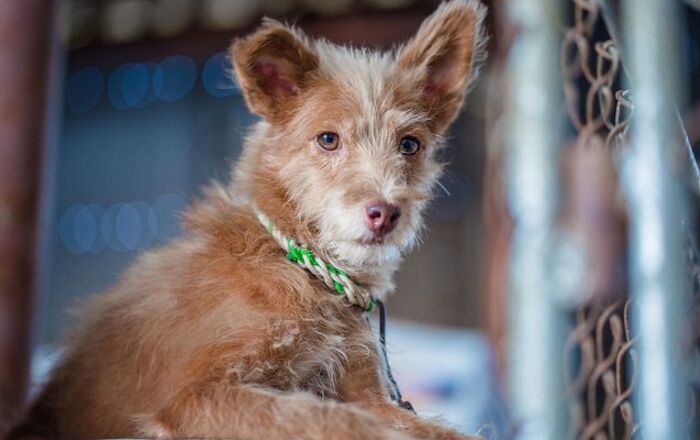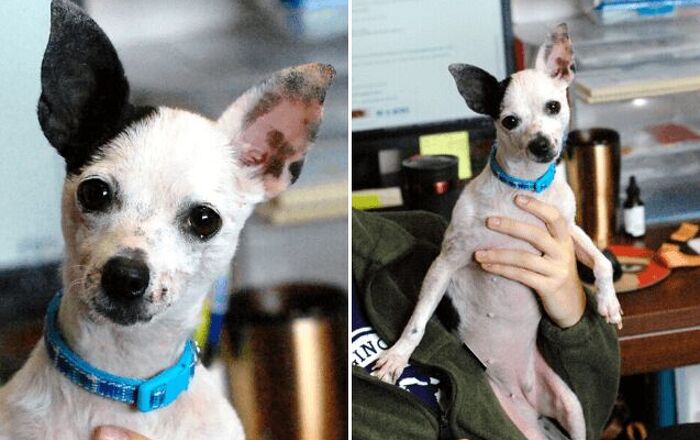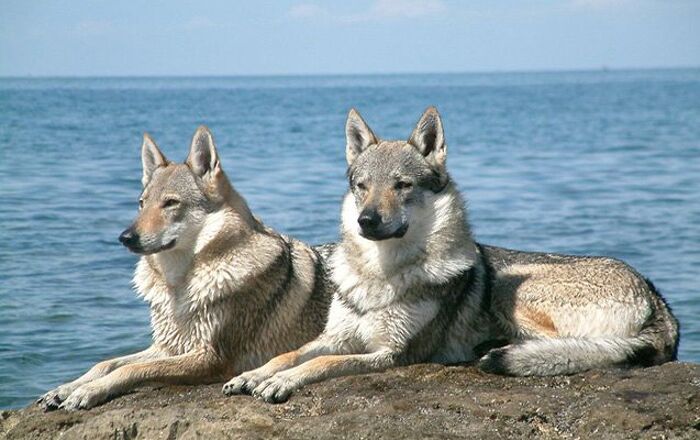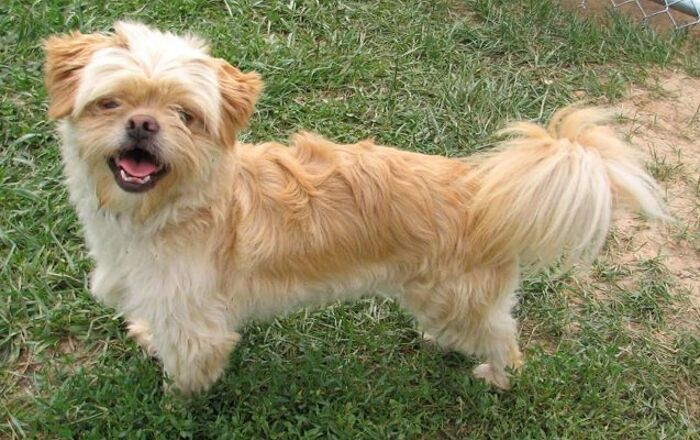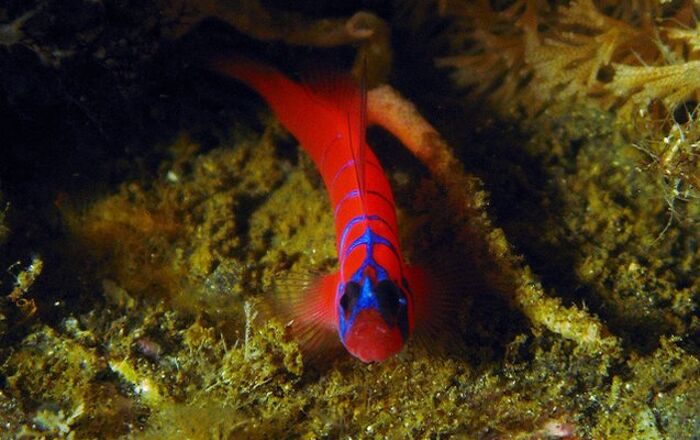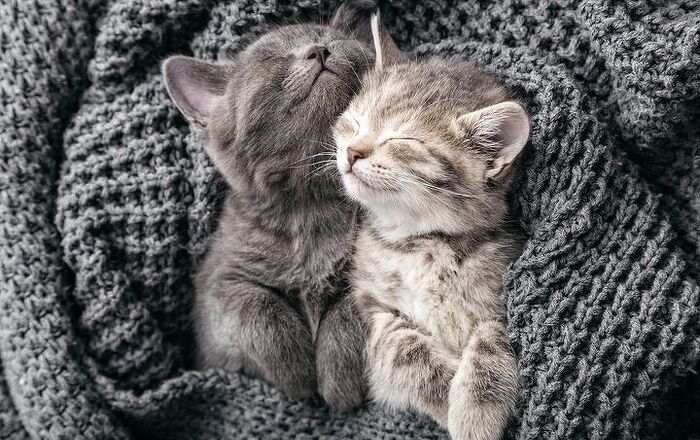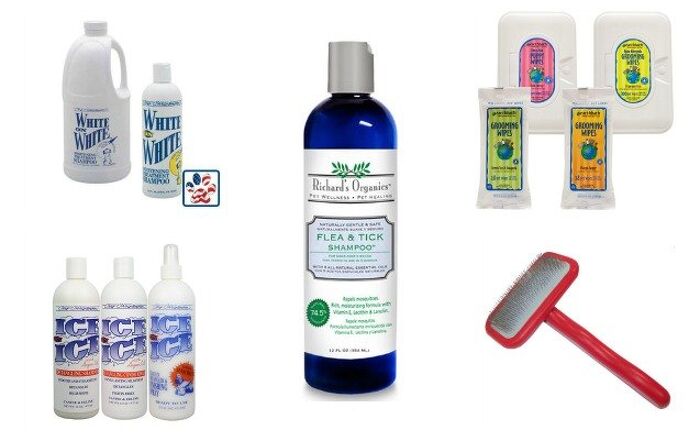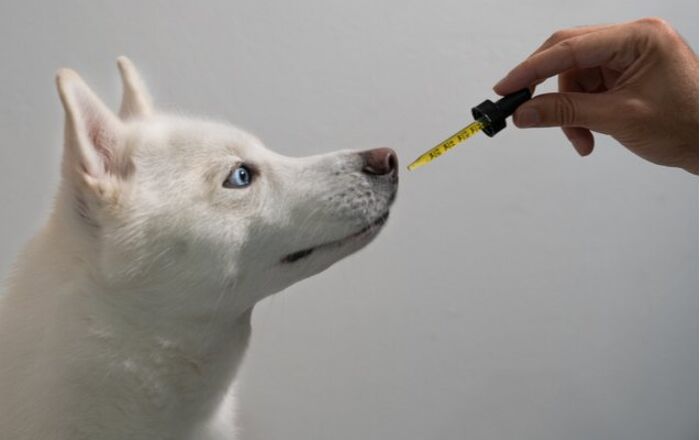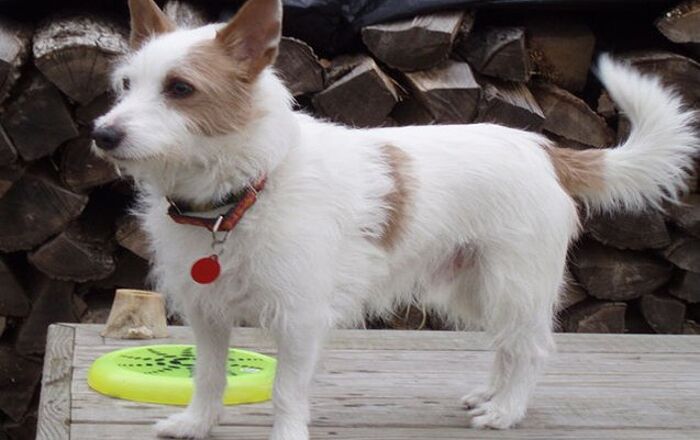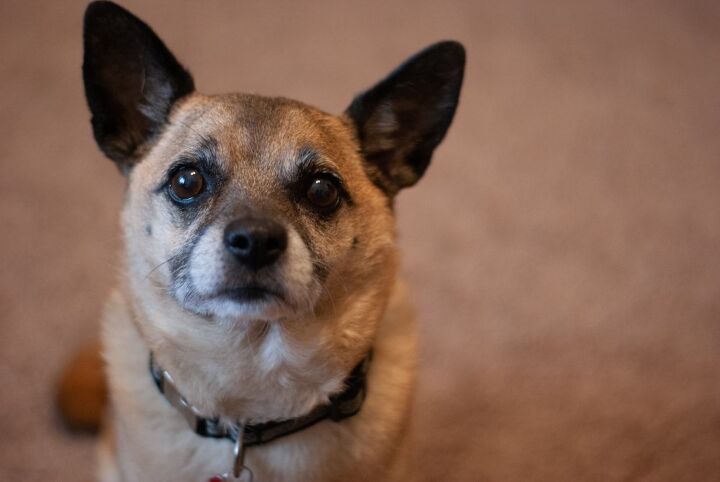
Pom-A-Pug Basics
You’d be hard pressed to find anyone who isn’t charmed by the wrinkly Pug or the fluffy Pomeranian. So, it’s no wonder that their mixed offspring, the adorable Pom-A-Pug is one of the most popular designer dog breeds out there! Also known as Pomapug, Puguranian, Pugapom, Pugpom, or Pug-Pom, this hybrid dog is small in stature but with a big personality. Pom-A-Pug dogs are known to be smart, loyal and very affectionate. If socialized on time, they make wonderful family pets, and get along with kids and other furry family members.
Due to extreme differences in the looks between the parental breeds, it’s almost impossible to predict how Pom-A-Pug puppies will turn out looking when they grow up. Even across one litter, the variations can be mind-boggling: some puppies might favor the brachycephalic Pug more than the foxy-faced Pomeranian, while others might inherit longer hair rather than a closely clipped coat. This means that there are no guarantees when it comes to the appearance of Pom-A-Pug, but one thing’s for sure- you’ll adore your new furry best friend, regardless of which parent they look like more.
Pom-A-Pug dogs are known to be smart, loyal and very affectionate.
Origin
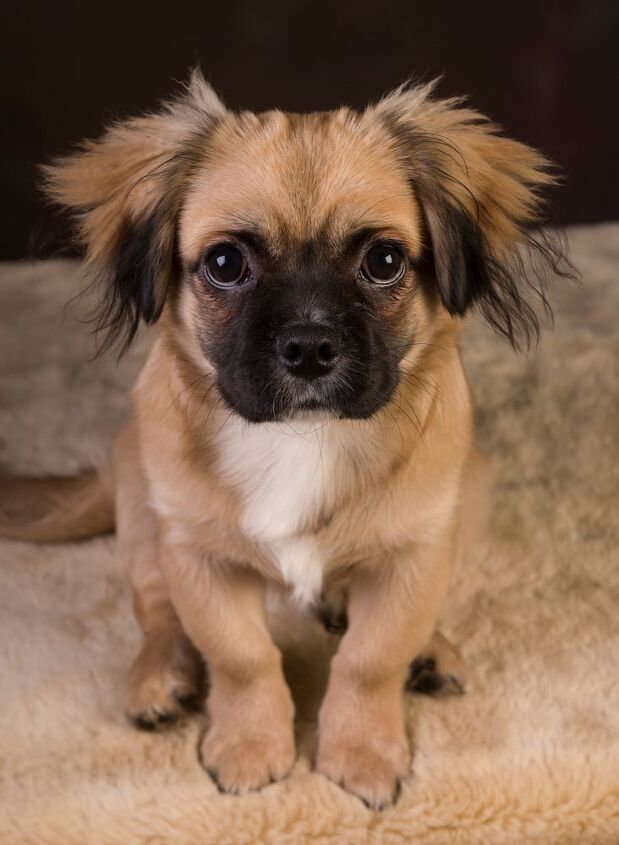
Not unlike all designer dog breeds, the Pom-A-Pug has a mysterious past. While there have been a lot of “accidents” over the years which gave us Puguranian puppies even before we had the name for them, it’s only recently that breeders began developing this hybrid dog intentionally. It’s estimated that first litters gotten by purposely crossing a Pomeranian with a Pug were created in the United States, sometime in the last two decades, when crossbreeding became a popular practice.
Of course, the fact that we dub the origin of the Pom-A-Pug as mysterious doesn’t mean that same goes for his ancestors. Both the Pomeranian and the Pug were first recognized as breeds centuries ago when their petite stature and lovable characters earned them a place in the lap of nobles and aristocrats. Many generations after, these dog breeds remain one of the most loved and popular pets across the world.
Pedigree
For a breeder to obtain pedigree papers for a puppy, they have to be recognized by the American Kennel Club or another official canine organization in their country. However, designer dogs, in general, are still not recognized as official breeds, which makes it impossible for the Pom-A-Pug or any other hybrid to have a pedigree. However, the fact that the puppy doesn’t have a pedigree won’t mean that its parents don’t. In fact, a reputable breeder will be able to give you information about your new puppy’s family tree and the line they originated from. Sometimes, if the parents have a show-quality pedigree, it can impact the price of their puppies.
Either way, if a breeder doesn’t seem willing to provide this information or doesn’t have papers for his Pom or Pug, it’s likely that they’re a puppy mill. Buying from a backyard breeder is strongly discouraged, as this supports their inhumane practices and makes it more likely for your new pet to be sick and prone to various issues throughout their life.
Food/Diet
Picking out the right food for your Pom-A-Pug pet won’t be hard. Same as all dogs, these mixed breed pooches also require a well-balanced diet consisting of high-quality, nutritive pet food. The most common choice is relying on commercial dry dog food to satisfy your pet’s need for vitamins and nutrients, and most blends designed for small dogs of moderate activity level will be a good fit. Additionally, you can introduce wet canned food to make their kibble more appetizing or homecooked meals as an occasional treat.
Another important thing to know about the Pom-A-Pug and their diet is that these designer dogs are greedy eaters. They’re not terribly picky and they’re very treat motivated, which can lead to potential health issues if their owner fails to restrain their incredible appetite. Treating your pooch to yummies can be a good training aid, but don’t overdo it- the Pom-A-Pug easily gains weight. Obesity-related health problems are particularly common among small breed dogs, so portion out their meals according to their needs, and not their wants.
These small dogs have big appetite- make sure not to to indulge them with too much treats as this can lead to obesity.
Training
The Pom-A-Pug is a people pleaser by nature, treat motivated and incredibly smart. All of these traits make this hybrid dog breed very easy to train. They tend to pick up commands fairly quickly and delight when they see their tricks are making their favorite human happy. With positive reinforcement training method, you could teach your Pom-A-Pug everything from where to go potty to playing dead on command. A little patience and dedication go a long way!
Of course, sometimes the Pom-A-Pug can inherit a stubborn streak from its Pomeranian parent. This can make training slightly more difficult than you’d initially expect, but even in this case, you shouldn’t have any major problems with your training sessions. After all, any dog can be trained if you manage to crack the mystery of what motivates them! Hint: it’s usually a lot of praise or a crunchy meat treat.
Weight
With all designer dogs, the element of surprise is always present. First generation crossbreed puppies are wildly unpredictable when it comes to their appearance, but as the Pomeranian and the Pug are close in size, the weight of the Pom-A-Pug shouldn’t vary much. On average, the Pom-A-Pug weighs between 7 to 15 pounds.
Temperament/Behavior
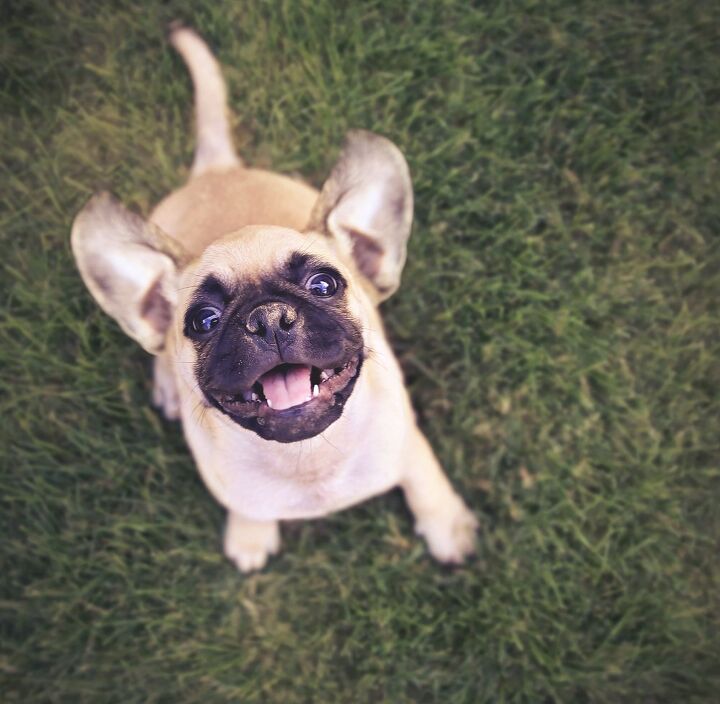
We already know that the Pom-A-Pug is cute as a button, but what about their personality? Is the adorable mix of the Pomeranian and a Pug all looks, no brains? Fortunately, the charming mugs of these pooches are not all the breed has to offer. The Pom-A-Pug combines two breeds that have been developed as companion dogs for centuries. So, it shouldn’t come as a surprise that their babies have great personalities, as well! The Pom-A-Pug is loving, sweet, playful and friendly. If socialized on time, these designer dogs will love kids, strangers, and other pets from the get-go! Sometimes, though, some of the less appealing parental traits can surface, too. From the Pom in the mix, your puppy can inherit the tendency to bark and act like a big dog trapped in a small body.
Additionally, their devoted and affectionate side can lead to behavior issues, too. Unless they’re taught to feel safe when home alone or crate-trained, the Pom-A-Pug can develop separation anxiety. This destructive behavior can be tough to overcome once it’s there, but timely socialization or a canine companion could be the solution to the problem.
Common Health Problems
Overall, mixed breed dogs and mutts have a reputation for being healthier than their purebred fellows. How about designer dogs? While there is some truth in them being less prone to congenital issues than their parents, it’s not all that easy and guaranteed when it comes to genetics. The Pom-A-Pug is a great example of this. As a hybrid dog, it can either have far fewer health problems than Pomeranian or the Pug, but it can also inherit issues from both of its parents. It’s all about the genetic lottery!
In general, the Pom-A-Pug is prone to a few issues, and a lot will depend on which parental breed the puppy takes up after. For instance, if the Pug’s genes are more dominant, issues common for brachycephalic breeds will be more of a concern than it would if your Pom-A-Pug has a Pom’s foxy snout.
The list of common health problems for this hybrid dog includes dry skin and proneness to allergies, patellar luxation (kneecap dislocation), obesity, eye infections, reverse sneezing, and epilepsy. Additionally, as a small dog breed, the Pom-A-Pug is particularly prone to early tooth loss and dental issues. Maintaining good oral hygiene through routine teeth brushing and dental treats will keep the plaque off your canine’s canines and allow them to keep their teeth even when they approach their golden years.
Life Expectancy
As an established breed, the Pom-A-Pug hasn’t been around long enough for experts to know its accurate life expectancy. However, as a small dog with fairly few major health issues, this designer dog breed should have a long, happy life. Based on what we know about its parental breeds and their life expectancy, it’s probable that your Pom-A-Pug puppy will live from 12 to 16 years.
Exercise Requirements
The Pom-A-Pug is definitely not a high-maintenance dog when it comes to activity levels. The Pomeranian and the Pug are both lively and energetic pooches, but the word ‘energetic’ doesn’t mean the same when applied to a large breed dog and a petite one. The Pom-A-Pug has moderate exercise requirements and it’s not a particularly active breed. About 30 to 45 minutes of activity will keep this hybrid dog happy and healthy. This could be a long walk, paired with a game of fetch in a nearby dog park or a fenced backyard- whatever your pupper prefers!
Of course, physical activity is not the only type of exercise the Pom-A-Pug needs to be a content dog. As an intelligent breed, these pooches will thrive when their mind is stimulated, and, in the same manner, get depressed or destructive when they’re not challenged. Pick up a few puzzle toys for your new pet- they’ll surely appreciate it.
Pom-A-Pug has moderate exercise requirements and it’s not a particularly active breed.
Recognized Clubs
The American Kennel Club might not recognize designer dog breeds, but there are numerous organizations that do. Many crossbreeding enthusiasts work tirelessly to ensure that breeding designer dogs is up to standards and that these unique canines become as widely recognized and their purebred parents. The list of clubs that recognize the Pom-A-Pug includes American Canine Hybrid Club, Designer Breed Registry, Designer Dogs Kennel Club, Dog Registry of America, and International Designer Canine Registry
Coat
When it comes to their hair, the Pomeranian and Pug couldn’t be more different. The Pom is known for its long, fluffy fur and the flat-faced Pug sports the distinct short coat that’s easy to groom. So, what about their mix? The Pom-A-Pug can have either medium-length or short hair, and a coat that comes in various colors, but favoring shades like beige and fawn. The coat can be smooth or slightly coarse, but in either of the combinations, it won’t be a hassle to groom.
The Pom-A-Pug is easy to keep pretty and tidy, and brushing them a few times a week will minimize shedding and maintain their hair shiny and soft. Regular bathing is not necessary as these are not dogs that have a naturally strong odor. When they start to smell or get dirty, you can get them a bath, but make sure to choose shampoo and conditioner that suit their dry and sensitive skin.
Puppies
With their short snouts, big soulful eyes and spunky character, Pom-A-Pug puppies will charm the pants off of you as soon as you see them! They are very cute and lovely, and it’s easy to see why these designer dogs are so popular. However, Pom-A-Pug puppy will need training and socialization to make sure that their character is as wonderful as their appearance. Start with potty training and basic commands, and progress from there.
Once they are all grown up, Pom-A-Pug dogs will be friendly, sweet, and very affectionate to their family members. They tend to get along with other dogs, as well, so they are a good choice for people who are looking to get another dog for their family. They are not overly active and demanding when it comes to their grooming, so they can be a great option for a senior looking for a four-legged companion.
Photo credit: Annette Shaff/Shutterstock; Cori Cornejo/Shutterstock; Caz Harris Photography/Shutterstock

